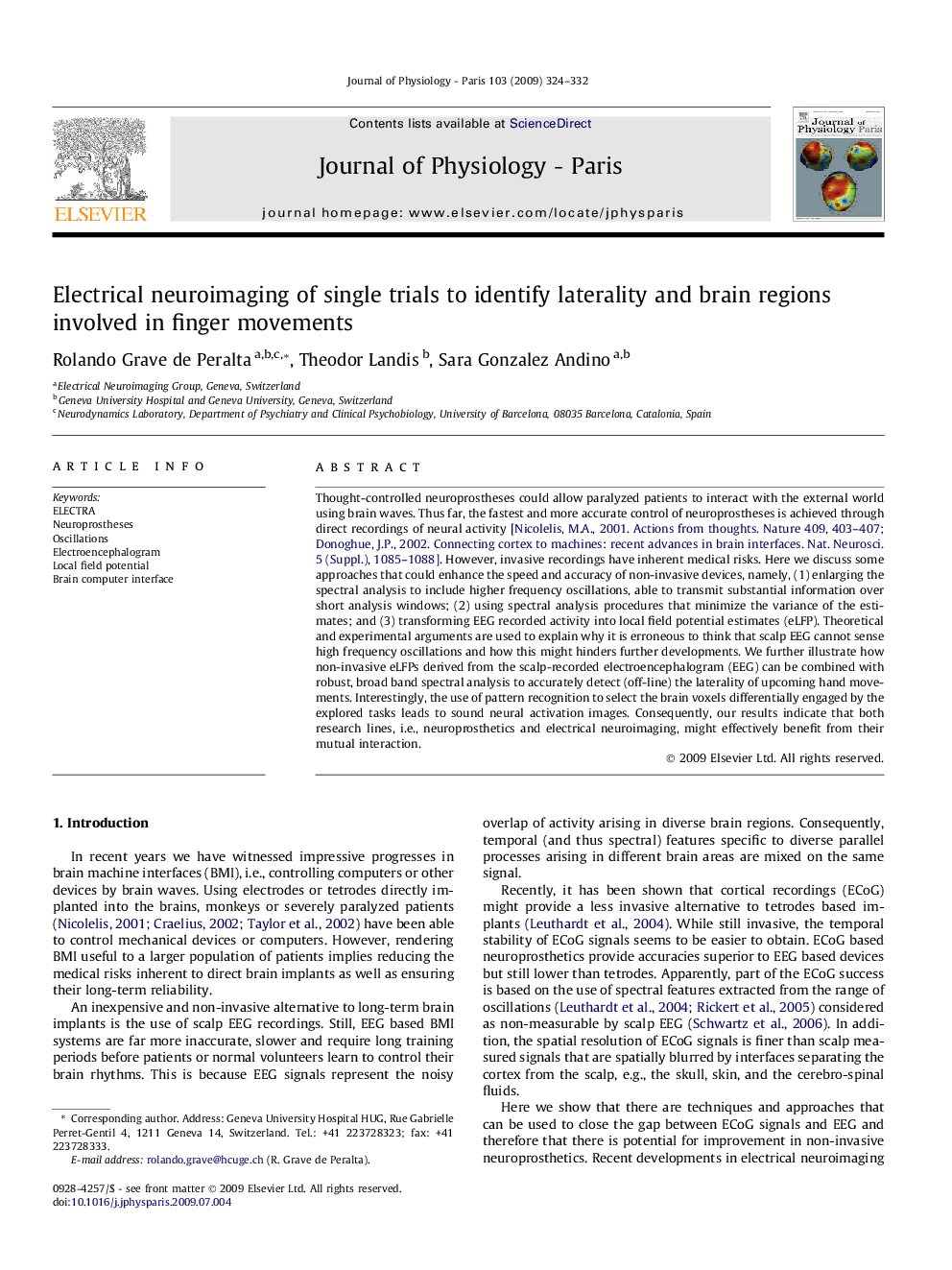| Article ID | Journal | Published Year | Pages | File Type |
|---|---|---|---|---|
| 2842506 | Journal of Physiology-Paris | 2009 | 9 Pages |
Abstract
Thought-controlled neuroprostheses could allow paralyzed patients to interact with the external world using brain waves. Thus far, the fastest and more accurate control of neuroprostheses is achieved through direct recordings of neural activity [Nicolelis, M.A., 2001. Actions from thoughts. Nature 409, 403-407; Donoghue, J.P., 2002. Connecting cortex to machines: recent advances in brain interfaces. Nat. Neurosci. 5 (Suppl.), 1085-1088]. However, invasive recordings have inherent medical risks. Here we discuss some approaches that could enhance the speed and accuracy of non-invasive devices, namely, (1) enlarging the spectral analysis to include higher frequency oscillations, able to transmit substantial information over short analysis windows; (2) using spectral analysis procedures that minimize the variance of the estimates; and (3) transforming EEG recorded activity into local field potential estimates (eLFP). Theoretical and experimental arguments are used to explain why it is erroneous to think that scalp EEG cannot sense high frequency oscillations and how this might hinders further developments. We further illustrate how non-invasive eLFPs derived from the scalp-recorded electroencephalogram (EEG) can be combined with robust, broad band spectral analysis to accurately detect (off-line) the laterality of upcoming hand movements. Interestingly, the use of pattern recognition to select the brain voxels differentially engaged by the explored tasks leads to sound neural activation images. Consequently, our results indicate that both research lines, i.e., neuroprosthetics and electrical neuroimaging, might effectively benefit from their mutual interaction.
Keywords
Related Topics
Life Sciences
Biochemistry, Genetics and Molecular Biology
Physiology
Authors
Rolando Grave de Peralta, Theodor Landis, Sara Gonzalez Andino,
